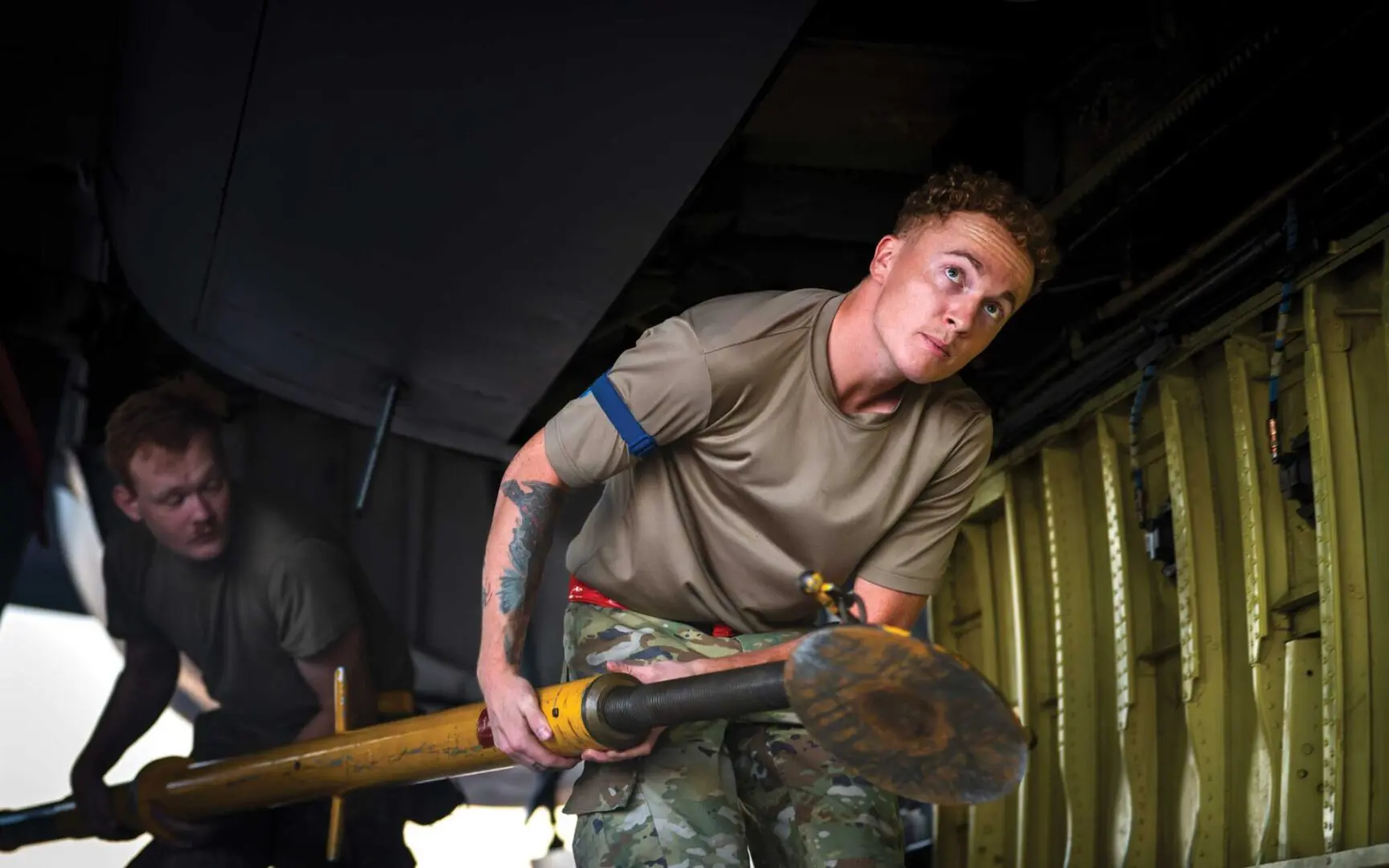Resiliency in Action: The 6th Air Refueling Wing’s Remarkable Mission Success
By Mrs. Lauren Fosnot, Staff Writer
In September 2024, Hurricane Helene rapidly intensified from a tropical storm to a powerful Category 4 hurricane, leaving widespread devastation in its path. Amid this chaos, the 6th Air Refueling Wing (6 ARW) at MacDill Air Force Base in Tampa, FL, proved once again why it is a powerhouse in accelerating global airpower and poised to win against any threat that comes its way.
The secret to its strength? Building resilient teams.
When Hurricane Helene struck, the 6 ARW’s maintenance team, led by Maj Mitch Przybocki, exemplified tremendous resiliency as they navigated the storm’s impact while maintaining mission readiness.
“We preach what we call a ‘left pocket mindset,’” Przybocki shared. “It’s about remembering the commitment we made to serve. This mindset became crucial as we prepared for the storm of the century.”
This concept of service before self was demonstrated as many Airmen rapidly relocated aircraft, safeguarded resources, and ensured operational continuity during the threat of the storm.
“I was in the shoes of all my maintainers, worried about my family and my home, but knowing we had a mission to accomplish,” he said.
With only twenty percent of their squadron’s manpower—sixty-two personnel of a roughly three-hundred-member team—the 6 ARW maintenance crew’s dedication did not waver as they relocated fourteen aircraft to McConnell Air Force Base in Wichita, KS.
In addition to this feat, the team ensured readiness of aircraft for a key mission for the 618th Air Operations later publicized as a B-2 strike against Houthi targets in Yemen, which marked the first time in the 2020s that the aircraft was used in a combat operation.
“We had to launch our refueling mission from McConnell the day after the storm to refill that B-2,” Przybocki explained, highlighting the seamless execution of their mission-critical operations, even under extraordinary circumstances.
The director of operations shared that the concept of Agile Combat Employment played a critical role in the team’s operations. With limited manpower, the team relied on cross-functional expertise to maintain readiness.
Part of this equation is Multi-Capable Airmen, Przybocki said. This was exemplified by a Senior Airman who stepped up to assist crew chiefs with pre-flight visual inspections, which was not part of her core job.
Przybocki shared that safety remained a top priority throughout the high operational tempo. The decentralized command structure empowered many Airmen to ensure tasks were completed safely and accurately.
Despite numerous challenges, from the hurricanes to the missions at hand, the team achieved an impressive eighty-eight percent mission-capable rate—the highest tanker mission-capable rate among the three Continental United States Air Mobility Command bases for October. Even more remarkable, this achievement represents a one-hundred-percent mission-capable rate for their available manpower, which was only twenty percent of their usual capacity.
“Within twenty-four hours of absorbing all fourteen aircraft, my team had them mission capable,” said Przybocki. “We knew our mission: be ready.”
This accomplishment was even more notable, considering it followed very soon after multiple relocations of their fleet due to hurricanes.
“What my sixty-two maintainers did was relocate the fleet three times this hurricane season, while also generating for our [Strategic Command] exercises in the summer. And we’re talking about airplanes that date back to the Eisenhower Administration,” Przybocki added.
The director of operations was also thankful for the McConnell team, whose support allowed the 6 ARW to hit the ground running when they returned to MacDill.
“It takes a village to project combat capability,” said Przybocki. “Our maintainers were incredible.”
Through dedication and collaboration, the 6 ARW maintenance team ensured mission continuity without degradation. Their efforts during Hurricane Helene exemplify resilience, adaptability, and the power of strong leadership to overcome adversity.
“Maintainers can be incredible when you give them their purpose,” Przybocki emphasized. “We knew our mission: preserve airpower. And we did that.”




